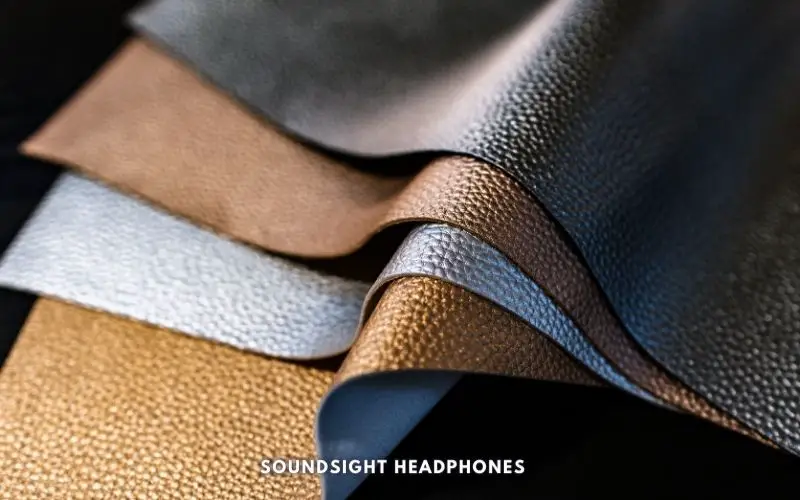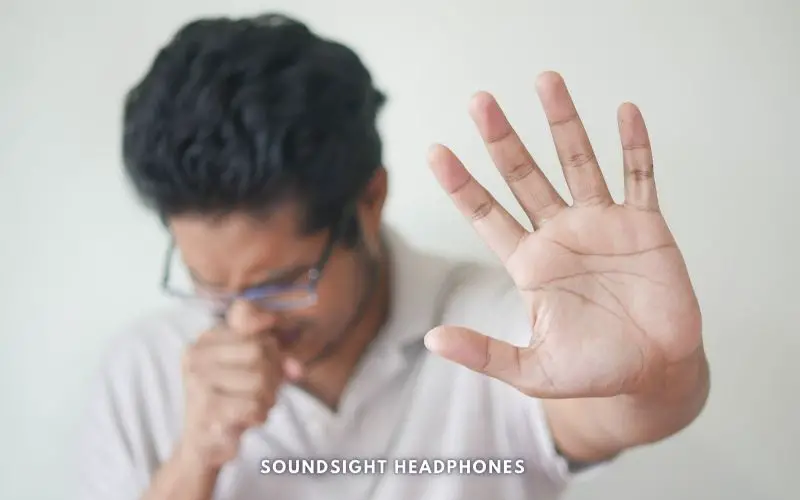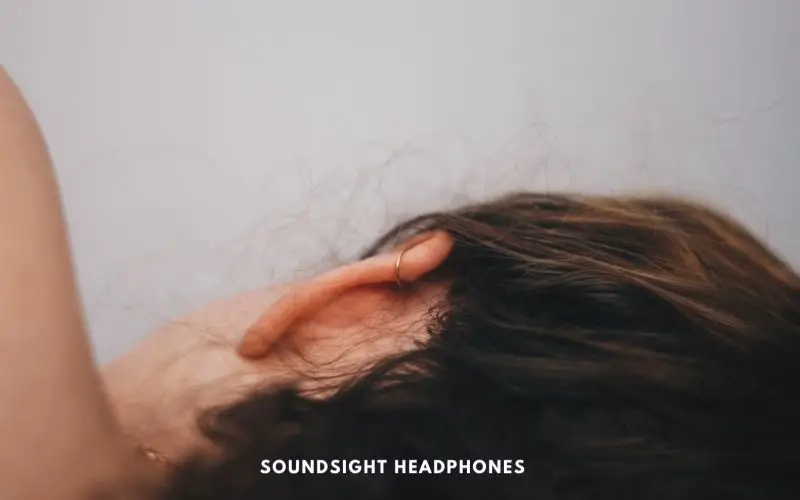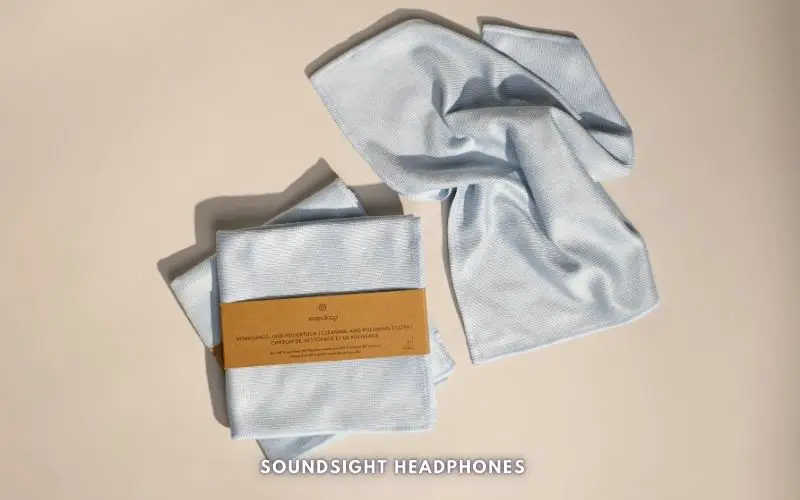Did you know that headphones could cause you more harm than good? Surprisingly, numerous headphones contain allergenic materials, potentially causing allergic reactions for some users.
These materials—ranging from rubber, thiuram, nickel, benzophenones, dyes, silicones, acrylates, methacrylates, latex, polyurethane, PVC, stainless steel, cobalt, 4-tert-butyl-phenol, chromium, leather, and formaldehyde—can be found in various components of headphones.
Before disregarding headphone allergens and their health effects as trivial, consider their potential impact on your well-being.
In this article, we’ll explore allergenic materials present in headphones, the allergic reactions they can trigger, and how to prevent these reactions from negatively impacting your health.
So, buckle up and prepare to be enlightened about the hidden dangers lurking in your headphones.
Allergenic Materials Found in Headphones
A significant number of individuals experience allergic reactions to headphone materials. These reactions can range from mild irritation to severe skin inflammation.
The common allergens in headphones include:
- Metals: nickel, stainless steel, cobalt, chromium
- Polymers and plastics: rubber, silicones, acrylates, methacrylates, latex, polyurethane, PVC
- Chemicals and compounds: thiuram, benzophenones, dyes, 4-tert-butyl-phenol, formaldehyde
- Natural materials: leather
Rubber
Some headphones and earbuds use rubber or latex materials in their ear tips, padding, or headbands. People with latex allergies may experience discomfort, itching, redness, and swelling when using these products.
Choose headphones or earbuds made with latex-free materials, such as silicone, foam, or synthetic leather, to avoid allergic reactions. Look for products labeled as “latex-free” or “hypoallergenic.”
Thiuram
Thiuram is a chemical compound commonly found in rubber products, including some types of ear cushions or padding in headphones. It’s used as a rubber vulcanization accelerator and fungicide and can cause allergic contact dermatitis (ACD) with symptoms like redness, swelling, itching, and blisters.
Thiuram mix [A] contains four allergenic substances in many rubber products, potentially affecting headphones with rubber or synthetic components.
If you suspect that you have a thiuram allergy, it is recommended to avoid products that list any of the following names in the ingredients: Tetramethylthiuram monosulfide, Disulfiram, Tetramethylthiuram disulfide, and Dipentamethylenethiuram disulfide.
Nickel
Headphones can cause discomfort for those with nickel allergies, affecting 10-20% of people, especially women.
Nickel contact dermatitis symptoms include itching, redness, swelling, and blisters. Nickel is commonly used in headphone components due to its durability, corrosion resistance, and affordability, but it can trigger allergic reactions.
To avoid discomfort, choose nickel-free headphones or earbuds made from alternative materials like stainless steel, titanium, or plastic.
Nickel is commonly utilized in:
- Speaker drivers: Enhances magnetic properties and voice coil and magnet assembly performance.
- Wiring and connectors: Provides conductivity and corrosion resistance as a coating for headphone wires and audio jacks.
- Metal components: Strengthens and increases durability in headbands, hinges, and earcup frames.
- Decorative elements: Used in logos or accents for aesthetic purposes.
- Screws and fasteners: Improves durability and corrosion resistance in headphone assembly.
Benzophenones
Headphones with allergenic materials like benzophenone can cause discomfort for those with sensitivities. A benzophenone allergy may lead to skin irritation and itching. To prevent this, choose benzophenone-free headphones or benzophenone-free earbuds for a comfortable listening experience without adverse effects.
Dyes

Vibrant dyes, particularly disperse and azo types, can cause skin irritation and allergies. Opt for dye-free or hypoallergenic headphones to avoid contact dermatitis.
Silicones
Silicones provide a smooth texture for ear tips and cushions but may cause allergic reactions in sensitive individuals. Consider alternatives like memory foam or Comply foam tips.
Some users have developed allergic reactions to Apple AirPods Pro ear tips due to silicone. If you experience ear itching, burning, or discomfort, check if your ear tips contain silicones and switch out the tips for an allergy-free alternative.
Acrylates
Some headphones contain trace amounts of Acrylates in adhesives and coatings, mainly in ear cushions and headbands, which can cause skin irritation and allergies. Symptoms include itching, redness, swelling, and possibly blisters or rashes.
Most manufacturers will label their products if they contain acrylates, so checking the packaging or product description before purchasing headphones is essential.
Methacrylates
These chemicals, used in plastics and adhesives, can be found in headphone components and may cause allergic reactions. Be cautious if you suspect a sensitivity to methacrylates.
Latex
Though latex allergies exist, this material is rarely found in headphones, which typically use silicone, foam, or synthetic materials for ear tips and cushions. Nonetheless, check your headphones’ materials to prevent potential allergic reactions.
Polyurethan

Polyurethane (PU leather, synthetic leather, vegan leather) is widely used in headphone ear pads and headbands for its durability, affordability, and style. However, it may cause allergic reactions in some individuals.
PVC
PVC is a synthetic polymer commonly used in headphone construction. It’s versatile and comes in various forms, including vinyl, plastic components, and housings.
PVC (polyvinyl chloride) itself is not a common allergen. Some individuals may experience allergies to additives in PVC products, including plasticizers, stabilizers, and chemicals like phthalates, lead, cadmium, and possibly organotins.
Stainless Steel
Finding hypoallergenic headphones or earbuds can be tough for those with metal hypersensitivities. Stainless steel and other metal components, like alloy plates and metal housing, can contain nickel, which can cause allergic reactions.
To prevent such reactions, look for headphones labeled as nickel-free and made with hypoallergenic materials, like those without aluminum components. Some earbuds may also have a protective layer to prevent contact with allergen particles.
Cobalt

A metal causing allergic contact dermatitis in some, found in headphones, more precisely: the headphone’s metal casing, wiring, and connectors. Prolonged exposure to cobalt can cause skin irritation, redness, and itching in individuals sensitive to this metal.
4-tert-Butyl-phenol
This chemical is not typically considered an allergen. However, it can cause skin irritation and sensitization. It is commonly used as a stabilizer in plastics and rubber, which may be present in some headphones’ ear cushions or headbands.
Chromium
Chromium, specifically chromium (VI) compounds, can cause allergic contact dermatitis. It is often found in metal objects, leather products, and textiles, including headphone components such as metal parts, ear cushions, and headbands.
Leather

The leather itself is not an allergen, but the chemicals used in the tanning and processing of leather, such as chromium, nickel, and formaldehyde, can cause allergic reactions in some individuals.
Choose fabric or mesh alternatives if you are sensitive to chemicals used in processing these materials, such as dyes and adhesives.
Formaldehyde
Formaldehyde is a chemical commonly used in the production of various materials, including some plastics, adhesives, and coatings. It can be found in some headphones, particularly in the ear cushions or padding. Exposure to formaldehyde can cause allergic reactions, such as skin irritation, itching, and rashes.
Allergic Reactions to Headphones

Headphone materials can cause allergic reactions, ranging from mild irritation to severe skin inflammation and respiratory issues. The severity of the reaction varies, and not everyone is affected.
There are several types of allergic reactions that can occur due to headphone materials; these reactions may include:
- Skin irritation
- Ear infection
- Contact dermatitis
- Respiratory issues
To determine if you’re allergic to earbuds or headphones, look for symptoms in each reaction category.
Skin Irritation
Skin irritation, often due to headphone materials, affects those with sensitive skin or allergies, causing:
- Erythema: inflamed, red skin
- Pruritus: severe itching
- Urticaria: itchy hives
Extended headphone use may worsen symptoms. Allergic reactions to materials like latex or headband compounds can likewise cause inflammation, redness, itching, and localized swelling.
Ear Infections

Allergies can lead to ear inflammation and congestion in nasal passages and Eustachian tubes, leading to fluid buildup in the middle ear and fostering bacterial or viral infections.
Ear infections from allergies can cause symptoms like ear pain, pressure, swelling, fever, fullness, and hearing loss. Sometimes, these symptoms can be mistaken for an ear infection caused by bacteria or viruses.
Other side effects of wearing headphones could include a buildup of wax and debris within the ear and generalized itching or itchiness.
Contact Dermatitis
Contact dermatitis is a serious allergic response to headphone materials, typically triggered by allergens like nickel, latex, or specific plastics.
Symptoms include:
- Vesicles: tiny fluid-filled blisters
- Papules: small elevated bumps
- Crusting: crust formation on the affected area
- Oozing: fluid discharge from the affected area
- Swelling: inflammation and enlargement of the affected area
Respiratory Concerns
Occasionally, headphone materials may trigger respiratory problems in those with allergies or sensitivities.
Airborne particles or chemicals can cause headphone-related respiratory issues.
Symptoms may include:
- Shortness of breath: struggling to breathe
- Wheezing: high-pitched breathing sound
- Coughing: constant cough with mucus
- Nasal congestion: stuffy or runny nose
- Sneezing: involuntary, frequent sneezing
- Eye irritation: red, itchy, watery eyes
Most Common Reactions to Allergenic Materials Found in Headphones
You may think your trusty headphones are harmless, but they can also cause allergic reactions in some individuals.
Here are some of the most common reactions to allergenic materials found in headphones:
- Skin Rashes
- Swelling
- Itching
- Contact Dermatitis
- Sniffling and Coughing
However, in more severe cases, individuals may experience:
- Shortness of Breath
- Nasal Congestion
- Ear Discharge
Not all headphones have allergenic components, and reactions may differ based on an individual’s sensitivity to specific substances.
Allergenic Headphone Materials: How to Prevent Allergic Reactions
Effective preventative measures can greatly reduce the potential of a problem occurring in the first place or alleviate its severity.
Here are a few things you need to employ to prevent allergic reactions from using headphones:
Hypoallergenic Headphone Covers

The use of hypoallergenic headphone covers—which have materials designed to minimize contact between the head and earphone speakers—is an effective measure to reduce the risk of developing reactions.
Additionally, it’s crucial to check for allergies to the materials used in the headphones, such as silicone, acrylates, nickel, etc. If you have a history of allergic reactions, you may want to consider using hypoallergenic headphones or earbuds made from non-toxic, hypoallergenic silicone.
Some companies offer hypoallergenic headphone covers made from soft cotton that can be washed and reused frequently. So, if you have allergic reactions to headsets or headphones, these covers can help protect against sweat and perspiration while maintaining a comfortable fit of the headphones.
Keep Your Headphones Clean (and to Yourself)
Sharing is caring. Well, not when it comes to headphones! To avoid potential allergens, it’s essential to keep your headphones clean and avoid sharing them with others.

Allergic reactions to headphones can be caused by various factors, including the materials used, earwax buildup, and sharing headphones with others. One way to prevent allergic reactions is to keep your headphones clean and avoid sharing them with others.
Regular cleaning of headphones is essential to reduce dust and other allergens from collecting around the ear cup and help reduce the spread of germs and bacteria, which could trigger a reaction. For this, you can use a soft cloth or cotton swab lightly dampened with isopropyl alcohol.
Note that some people are allergic to isopropyl alcohol. In this case, consider using a softer cloth or brush dipped in warm water instead.
Related Articles:
- How to Clean Your Headphones – A Comprehensive Guide
- Choosing the Right Headphones for Sensitive Skin
- How Often Should you Clean Your Headphones
Limiting Skin Contact

To prevent allergic reactions from headphones, it is recommended to avoid skin contact with materials you are allergic to and to clean new headphones or earbuds before using them for the first time.
Limiting the length of time spent wearing headphones is also important, as it reduces the amount of time skin is in contact with potential irritants. It also keeps the ear cool and refreshes the air inside the cup, reducing sweat build-up and the risk of contact dermatitis.

If you experience any symptoms of an allergic reaction, such as itching, burning, redness, blistering, or fluid leaking from the ear, discontinue the use of the headphones and seek medical attention if necessary.
Twist Headphones
Twisting headphones ensures even pressure distribution, lessening ear stress and cushion friction. This, in return, prolongs the headphone lifespan and minimizes skin irritation issues and discomfort.
Opt for Allergen-Free Headphones
Finally, if you buy a new headphone, choose hypoallergenic headphones. These are made with hypoallergenic materials and labeled as latex-free, nickel-free, or formaldehyde-free can help prevent allergic reactions.
Best Headphones for Sensitive Ears
If you have sensitive ears or allergies, it’s important to choose headphones made with hypoallergenic materials. Here are some of the best options:
- Meze Audio 99 Classics
- Audio-Technica ATHM50XBT
- Sennheiser HD 660 S
- Focal Clear
- Beyerdynamic DT 770 Pro
- ONANOFF BuddyPhones School+ (Safe Headphones for Kids)
The reason these are the best headphones for sensitive ears is that they are made with high-quality materials, such as memory foam ear pads, soft leather, or hypoallergenic fabrics. These materials provide a comfortable fit and reduce the risk of irritation or allergic reactions, suitable for sensitive ears while providing excellent sound quality and noise isolation for a pleasant listening experience without discomfort.
